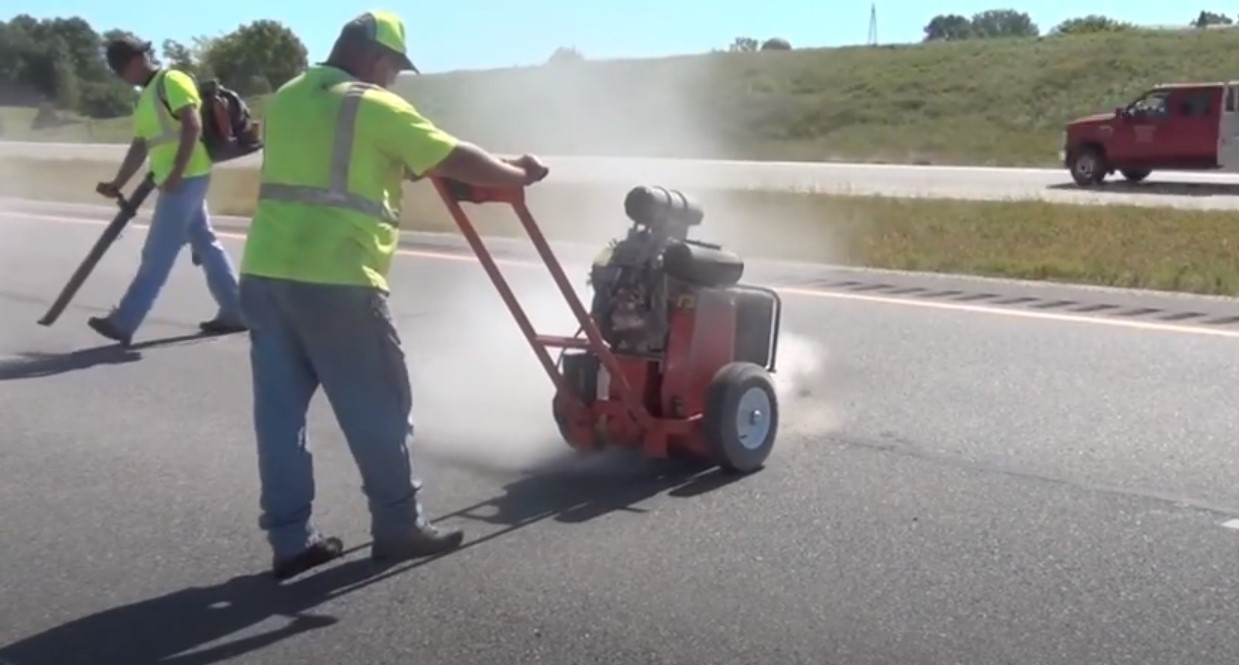Why should I seal asphalt cracks?
Proper attention to pavement cracking will prevent cracks from spreading and double the life of the pavement. Treating pavement cracks quickly will pay big dividends later by delaying costly resurfacing.
Any crack in the pavement will allow moisture to penetrate to the subsurface. The goal of a good pavement maintenance program should be to keep moisture from entering the asphalt pavement. Even cracks that may go largely unnoticed are conduits for moisture.
More on Crack Sealing…
Cracks in asphalt pavement are not unusual. Unfortunately, neither is the eventual deterioration of the asphalt pavement if cracks are left unattended. Cracks that are not repaired allow water to enter and deteriorate the sub-grade and eventually the surface; usually resulting in alligatoring, potholes, and the general failure of the pavement.
Crack sealer is an elastic material designed to seal joints and cracks against this moisture infiltration into the sub-grade. Sub-grade moisture is one of the leading causes of pavement failure, so it is essential that asphalt cracking is attended to promptly in order to extend the life of the pavement and save money long-term.
Bargen Incorporated uses a hot-applied, polymer-based material crack sealer. Using a hot sealer is far superior to a cold-pour sealer. Cold-pour sealers, although marginally less expensive, do not adhere as well and tend to fail with temperature changes.
Our Crack Sealing Procedures:
- Bargen, Inc. routes highway cracks at 1″ wide by 1″ deep when crack spacing is 40′ apart and closer, and 1.25″ wide by 1″ deep when spacing exceeds 40′. Parking lot dimensions are .75″ to 1″ wide by .75″ deep. If the cracks are wider, they will be routed accordingly.
- Cleaning of the crack is accomplished with the use of air pressure. Bargen, Inc. recommends using backpack blowers because of their mobility. Contamination of the crack can cause the sealant to bond poorly to the asphalt.
- The chances of good sealant bonding are reduced by several factors including cold temperatures, dirt, and moisture. To create a clean dry surface, Bargen Inc professionals recommend that cracks be treated with a heat lance. The heat lance ensures a clean dry crack before sealant installation occurs.
- The sealant that Bargen Incorporated uses meets and exceeds the Minnesota State Spec. #3723.2 and Iowa ASTM-D6690 Type II & III Spec. with the following modification: 100% elongation at -20° F. Bargen Inc recommends installation of the sealant to be completed in a two step process. First, the crack is filled three-quarters full and allowed to cool.
- As the crack cools the sealant can shrink by 15%. The crack is completely filled and sealed with an over-band a second time. This final over-band maximizes the sealant quantity installed in each crack




